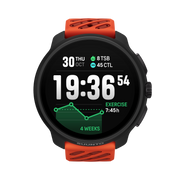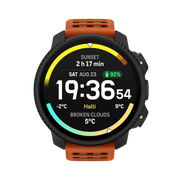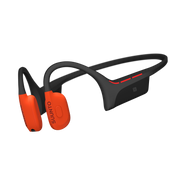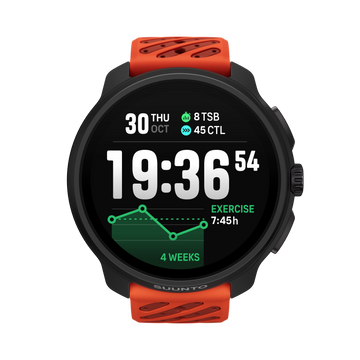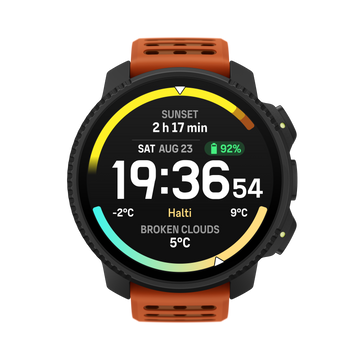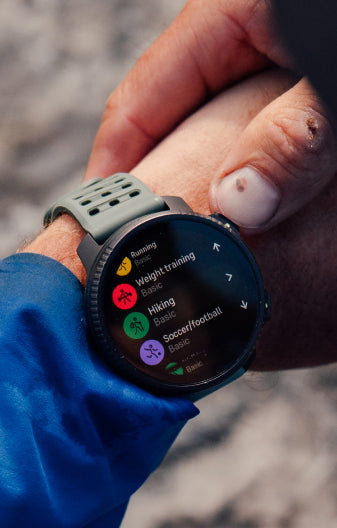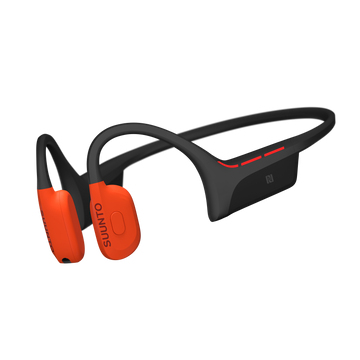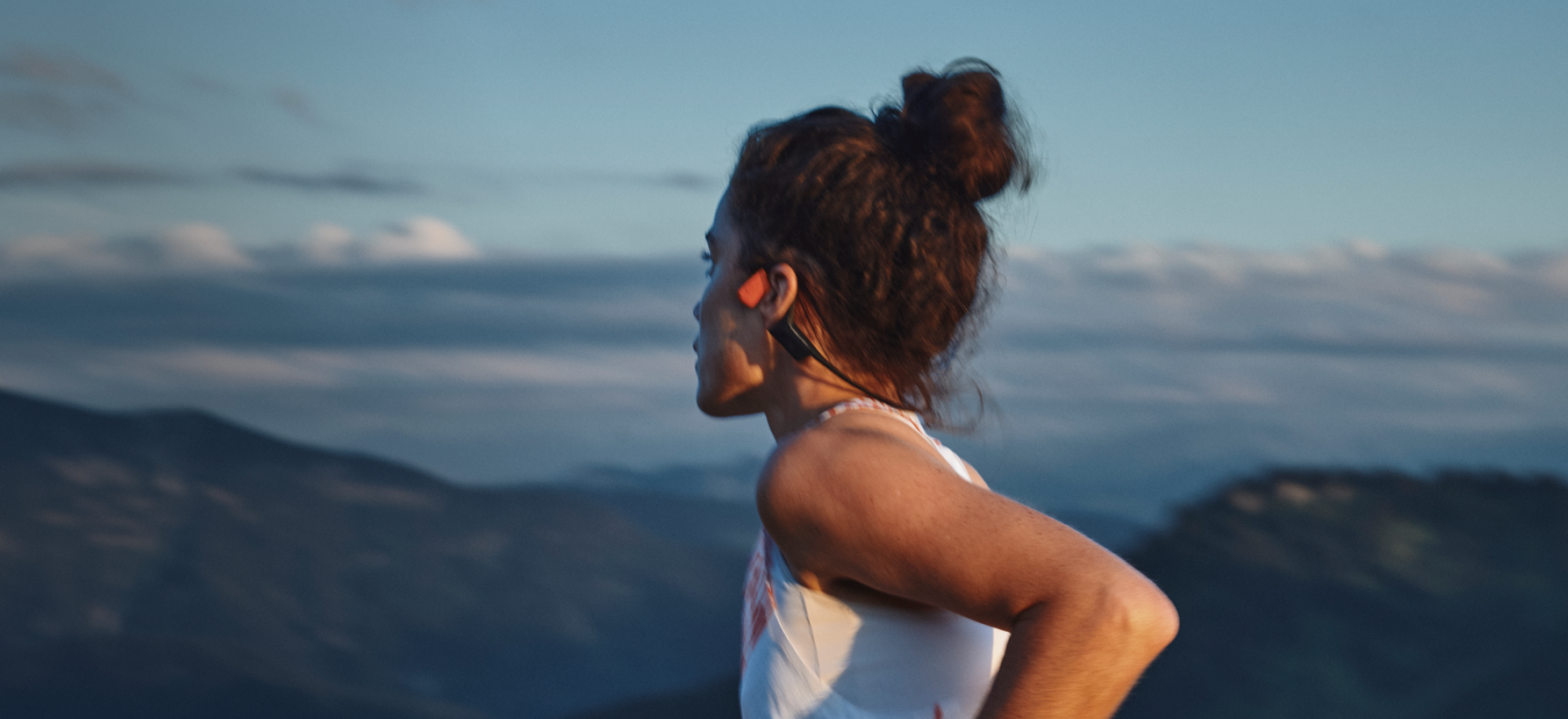

Suunto-blogg
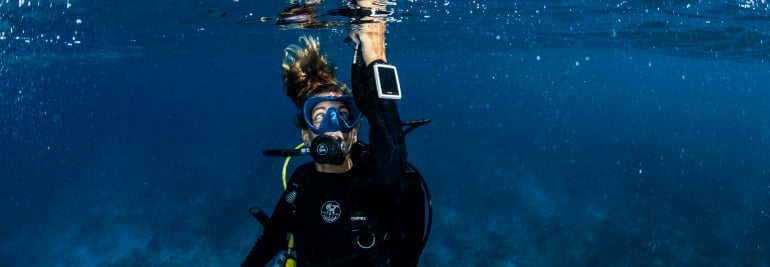
Dive Doctor's Orders
Spring into action slowly but surely after a longer break between dives. Photo by Alex Kydd.
Partial as I am to pies, chips, peas and as many garishly colored fatty sauces as I can cram in, there comes a time when the wetsuit constricts the internal organs so much that radical action is called for. With the new diving season nearly upon us, it’s an opportune moment to review the best ways to trim down and ease those rusty diving muscles back into action.
Ease those rusty diving muscles back into action. Photo by Alex Kydd.
Improve fitness
Get in shape with some cardiovascular exercise, eg. running, swimming or cycling (as well as getting the ticker pumping, this will help develop flexibility, tone and strength in the core muscles of the back, abdomen and legs).
Stay hydrated
Keep those fluids up, particularly if you’ve had alcohol in the 24 hours before diving. It takes a few days to really get hydrated so stay on top of your water intake.
Easy start
Short, shallow, and in calm conditions are the only way to get back into the water after a pause. Diving is more fun when it is safer, and careful preparation, visualizations and warm up dives are good practice.
Stop smoking
No other action will have a more positive effect on your gas consumption, bottom times and overall health.
Lose weight
A lighter, more hydrodynamic physique will benefit you before, during and after dives.
Service kit
Regulators and demand valves in particular. Ensure your BCD/dry suit is working properly, your computer has sufficient battery power and the rest of your kit is in good condition – preferably before you get to the dive site!
Test dives
Try out any new equipment in a pool/sheltered area to get used to it. This goes for recently serviced kit too, have a few dives and be sure you are ready to go diving.
|mportant O2
Ensure you have access to oxygen in case of emergency, and make sure you have enough to last. Everyone should know where the oxygen is stowed whilst you are diving, if you aren’t sure then make it your business to find out.
Be prepared
Keep the details of your nearest chamber/helpline to hand, and if in any doubt, call them earlier rather than later,
Photo by Alex Kydd.
And remember, some basic but often overlooked ways of minimizing your inert gas burden and decompression stress:
Plan the Dive, Dive the Plan
Stay well within your planned dive parameters – your computer has an algorithm but has no idea of how tired/unfit/hungover you are, so don’t push its limits
Slowly does it
Keep your ascent rate controlled – watch your buoyancy, particularly in the shallow part of the water column.
Safety chill
Incorporate safety stops and pad them out if you have spare gas to do so, especially when you’ve been diving deep, strenuously, or in cold water. Imagine all the wonderful encounters you may experience if you hangout out a little bit longer underwater.
Post dive chill
Avoid doing any hard exercise for several hours after the dive (this includes lugging all your kit up hill) – bubbles are liberated from off-gassing tissues for some time after you’ve surfaced, and the less they are agitated the better.
Multi day chill
If you’re diving on multiple occasions over several consecutive days, try to insert a dive-free day every 2-3 days to allow your tissues to desaturate completely.
Stay down
Don’t go to altitude sooner than is recommended – generally 24 hours from completing your last dive.
Photo by Alex Kydd.
It’s worth emphasizing that in spite of doing everything correctly, and following all the established preventative strategies outlined above, divers still get bent for no apparent reason. There’s no justice in this world, and life is inherently unfair.
So make the call, ask for advice, alert someone, even if you feel you can’t possibly have DCI - any symptom that wasn’t present before the dive should be assumed to be DCI until proven otherwise.
About Dr Oli
Dr Oli, Hyperdive.co.uk, much like the surface of our blue dot planet Earth, is approximately 60-70% water. He constantly strives to put much of the other 30-40% to good use in the field of diving medicine.
Serving as the Medical Director and Senior Hyperbaric Physician at London Diving Chamber, UK for 13 years, this post at one of the busiest hyperbaric chambers in the UK has given him extensive experience in the assessment and management of all types of diving accidents and emergencies. In addition he has gained a thorough knowledge of the practice of hyperbaric medicine, for non-diving conditions.
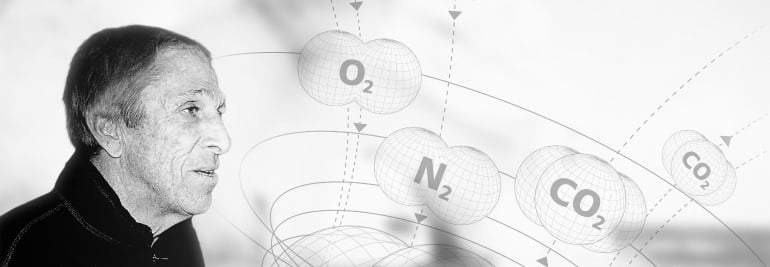
Tribute to Dr Bruce Wienke
It is with great sadness that we announce the news that our beloved Dr Bruce Wienke, a true pioneer in his field of dive specific algorithm design, has passed away leaving behind a great legacy.
A keen diver, and downhill skier, Dr Wienke’s interest in diving was reflected in his achievements, and great success as seen in his accolades. His astonishing CV included Instructor Trainer and Technical Instructor with NAUI, a Master Instructor with PADI, Institute Director for YMCA, and an Instructor Trainer/Technical Instructor for SDI/TDI.
“Most of the diving I have done has always been interesting and exciting. To my Australian friends, diving the Great Barrier Reef was incredible. Another favourite place is diving underneath the Arctic ice. It is just amazing; the water is cold of course, but it is just amazing. It is so clear, and perhaps because of the overhead ice and the associated underwater activity it’s like diving in a three dimensional surrealistic world. It is fantastic, and contrary to what you might think there is a variety of life down there. Very cool.” Dr Bruce Wienke.
Dr Wienke joined Suunto in the late 90’s, where he hit the ground running and didn’t stop. The collaboration arose after some of his diving work published on core screen modelling in the open literature and was noticed by Ari Nikkola who was at the time presiding over the inhouse the algorithm development at Suunto.
Employing his great expertise in the diving specific algorithm field, he joined Ari Nikkola in the development of the revolutionary Reduced Gradient Bubble Model (RGBM).
The RGBM, a name first coined by Dr Wienke, is a dual phase approach to staging diver ascents over an extended range of diving applications (altitude, nonstop, decompression, multiday, repetitive, multilevel, mixed gas, and saturation) and a giant stride forward from previous modified Haldanean decompression models.
Prior to joining the Suunto family, Dr Wienke was a Program Manager in the Nuclear Weapons Technology Simulation and Computing Office at the Los Alamos National Laboratory (LANL) where he completed research up until his death. As head of the LANL Nuclear Counter Measures Dive Team involving Special Warfare Units both above and below the water, he trained alongside the special forces well into his 70s.
His interests were in computational decompression models, gas transport, and phase mechanics. He was the author of five monographs on his field, as well as more than 200 technical journal articles and was an active contributor to underwater symposia, educational publications, technical periodicals and decompression workshops.
Alongside his high achieving work life, he served actively as a consultant for decompression algorithms within the dive industry and he worked with Divers Alert Network, DAN, on applications of high performance computing and communications for diving.
Wienke’s first Suunto dive computer releases were the Vyper and Cobra in 1999, which is still accompanying divers all over the world on their underwater adventures, shortly followed by the iconic, best-selling Suunto Stinger dive computer. With his continued support, Suunto together with Dr Wienke, using his own source code, created the Technical RGBM. Now including helium gas, and rated to a depth of 120m, the Suunto HelO2 and D9tx opened the door to the technical dive market. A major new release in 2012 from Dr Wienke saw the Suunto Fused RGBM which combined the Full RGBM and the Technical model. Greatly benefiting both the recreational and technical diver, the algorithm now supported rebreathers, and new depths were conquered with a 150m rating. The Suunto Fused™ RGBM 2 can be found in the latest releases, the Suunto Eon Series and the D5. The algorithm manages dissolved gas and free-gas in both the tissues and blood of a diver making it significantly smarter than any previous models. Dr Wienke described this algorithm as a supermodel.
Dr Bruce Wienke was a widely regarded and respected figure of the dive industry, and he will be by missed all his Suunto family. He died on Saturday 15th February 2020, and is survived by his wife, Annie.
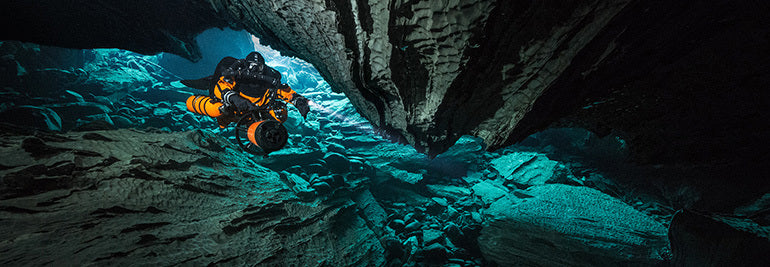
Watch this masterpiece and feel the urge to dive
An explorer alone in a frozen landscape breaks into the ice and descends into a vast, alien underwater world with no light besides what she carries. The eerie atmosphere, the unknown behind the curtain of darkness, the presence of another, all create tension in this film praised as a cinematic masterpiece.
Initially released in 2018, Dive Odyssey, by Finnish filmmaker Janne Kasperi Suhonen, is the story of an explorer and an aquanaut meeting in a mystical underwater labyrinth, hidden from the world by deep snow and frozen ground.
“I often make the analogy between technical diving and space,” says underwater explorer Andy Torbet, who plays the enigmatic aquanaut in the film. “The cold, the darkness, the psychology and the total reliance on your equipment to survive. But more than that you are entering the most alien, other-worldly place in our planet. And if you needed any convincing the aquatic world is one of alien wonder this film does just that.”
Photo by Dive Odyssey.
The film was shot in the old and long abandoned Ojamo limestone mine near the city of Lohja, 60 km from Helsinki. It’s now a modern day diver’s paradise with many kilometers of tunnels to explore, all starting at a depth of 28 m, and descending to 250 m.
The main character in the film, the mysterious orange clad explorer, is played by technical and cave dive Gemma Smith. Shooting the film was no glamourous Hollywood acting gig.
“As we all know roses grow out of the dirt and in this case, the dirt was the hardest diving I have ever done,” she says. “I am so proud of this project that when I am 90 years old, I will still look back on these dives and be impressed.”
Photo by Dive Odyssey.
Enduring four to five hour long dives in 2° C water was a challenge for the dive team. Add to that the need for a large amount of equipment, self dug entrance holes in the ice, and the requirement to film at night to ensure the popular dive spot was empty.
“Imagine this: rebreathers, scooters, overhead environments, large decompression obligations with a reverse thermocline at the surface as we hit the lake to decompress once we were out of the mine – and all at night time,” Gemma says.
After the dive team’s first dive in Ojamo, a short two hour jaunt, they returned to the surface only to discover that the exit hole had frozen over. The surface team quickly broke the ice to set the divers free. After that, strict surface protocols were followed to continually break the ice and prevent the exit from freezing over again.
“With water temperatures hitting 0° C diving conditions were tough,” Andy says. "Mix in dives to almost 100 m with kilometres of underground scootering carrying torches and cameras and you begin to realise this was a team effort where every individual is top of their game. It’s an environment most people would never choose to go, let alone make a film in. But the people made it possible.”
In order to dive the Ojamo mines, or any overhead dive environment, special training and equipment are required. The tunnels are perfect for cave and mine divers to explore. They are horizontal, and in layers with constant depths. The longest straight stretch is 1.7 km. Ojamo has become one of the most popular dive sites not only in Finland, but all of Scandinavia.
Suunto dive engineers regularly dive in the mine. The team of dedicated divers have amassed thousands of hours inside the tunnels while testing Suunto technology. This is an important part of the development process, and to constantly improve to ensure all Suunto devices meet strict performance targets.
It wasn’t always a labyrinthine diving paradise. Back in the 18th century it was limestone mine, and was then converted into a prison camp during the Second World War, when Finland was fighting the Soviet Union. The prisoners worked around the clock in hellish conditions until the end of the war.
Mining operations recommenced after the cessation of hostilities, but not for long, however. The value of limestone plummeted in the 1960s; the mine was abandoned, leaving it to slowly fill with water and ultimately preserving its magic and history.
Diving inside the eerie tunnels through the crystal clear water you can see what was left behind, including extensive tunnel systems, miners tools scattered on the floor, lightbulbs that look ready to switch on, even boxes of dynamite lay frozen in time in the cold water.
Divers have spent many years exploring and mapping the system, keen to discover unexplored routes. Why not explore this underwater adventure park yourself?
Learn more about the film here:
https://diversofthedark.com/
https://www.diveodyssey.net/
Lead image: Photo by Divers of the Dark
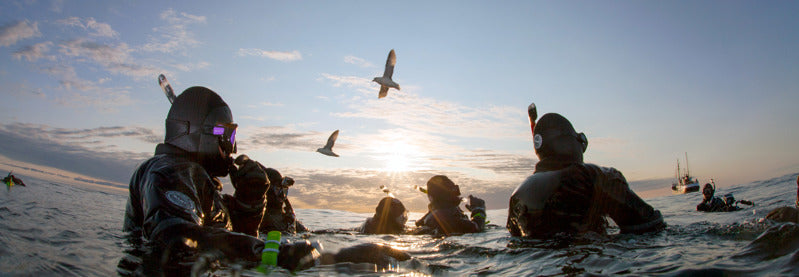
Dive In
Suunto Ambassador, pioneering cave diver, explorer and author Jill Heinerth talks about diving physiology in episode one of this four part series.
Can’t wait to watch the episodes? Click the links to dive right in!
Watch Episiode 1 now
Watch Epsiode 2 now
Watch Episode 3 now
Watch Episode 4 now
In this episode, Jill Heinerth discusses the basics of dive physics and physiology and how to better use your dive computers as an effective tool when planning, and executing dives.
Talking biological tissue and dive computers, Jill explains how the body reacts to the inert gas you breathe during a dive. When the body is subject to pressure from depth during a dive, it ‘on gasses’ as the inert gas dissolves into your tissues.
Our body tissues include the blood, the brain, ligaments, skin, bone, fat and all your organs and each tissue is delivered different amounts of blood, therefore absorbing different amounts of gas.
The rate in which tissues uptake and release the gas occurs differently for each group of tissues. The groups are sorted into different compartments alongside tissues that have similar gas saturation properties and behave in the same manner.
A dive computer allows the diver to view information that assists them on a dive, and the diver has the opportunity to decide to follow the device.
A dive computer will not, for the most, consider the individual differences of each diver using it. The "type" of diver that is considered is an average person, and there is an added safety margin to take into account to accommodate variations.
Your Suunto dive computer is based on mathematical models. This model, or algorithm, calculates the on gassing and off gassing of your compartments. The algorithm implemented at the core of a computer is a simulation of what happens to gases in a diver's body in an environment where pressure changes.
The research and development team at Suunto test, test and test again to ensure they meet the strictest performance targets. The dive team at Suunto are constantly improving and fine tuning the devices by diving with them over and over again, because we know you will too.
Check out episode one now and explore these topics further.
Episode 2
In episode two of Dive In, Jill Heinerth discusses how your dive commuter calculates ascents or decompression stops as we delve deeper into the basics of diving physics and physiology for both recreational divers, and those who dive beyond.
Having discussed how the human body stores and releases inert gas in the last episode, this week Jill examines how your dive computer calculates the maths that work out how the body gets rid of gas during off gassing, and how an ascent is just the beginning of the off-gassing process. Off gassing ends when the body has reached and found equilibrium with the surface.
When the body cannot take on any more gas into solution, it is termed- critical super saturation. This critical moment of reaching maximum pressure is known as the M value.
Different compartments mean lots of M values to consider in order to calculate how the body off gases when ascending during a dive.
Recreational divers will only consider the fast tissues. The time and depth parameters that recreational divers adhere to, keeps them away from nearing critical super saturation point. This is so they may directly ascend to the surface without a decompression stop.
Tech divers load both their fast and slower tissues, and this adds another layer of considerations. Sunnto has a team of dedicated researchers, engineers and testers who are constantly improving algorithms and have much real world dive data to use for their improvements.
Jill dives with Suunto, and says, “I have been diving with Suunto dive computers for over 20 years. Part of this is because I have seen the rigorous testing regiments, I’ve seen the manufacturing standards, as well as their active algorithm research and development. I’ve been to the factory, seen their testing and I know I can rely on their commitment to excellence.”
Find out why decompression models use up to 16 different theoretical tissue compartments and many more hot topics as Jill explains how your computer works in the second episode of Dive In.
Tune in next time for episode 3 to watch Jill get deep with personal factors and gradient factors.
Episode 3
Do you know what your Personal Factors are?
In a world where we are able to choose a product based on what is best suited for our individual needs, why would such a crucial piece of dive equipment, your dive computer, be any different?
Personal factors should not be over looked, yet many divers never read in to the dive computer manual deep enough to understand that their device can be tailored to suit an individual’s need. External influences can be taken into account and the dive computer conservatism setting can factor in risks for each dive. This is a very important part of safer dive planning.
During this episode of Dive In, we look at what the personal factors on a Suunto computer are, and how they need to be applied.
Jill also talks gradient factors, algorithms and dive teams. Few users, or even instructors actually understand how gradient factors work, or what they are. She shines a light on how different decompression models behave, and how dive buddies can work together even if they are diving following different decompression models.
Jill delves into what each number of the gradient factor represent, which one is more important and how to use them in your dive planning.
Jill also looks into the deep stop mystery. As divers we still have a lot of research to do into them, and over the years there has been much conflicting anecdotal advice. There is much misinformation buzzing around social media and dive forums leading to a vast amount of confusion.
Watch now as Jill Heinerth sets us straight on the key issues in this episode of Dive in.
Make sure you tune in next week for the fourth, the final and bonus episode where Jill shares her story of getting hit.
Episode 4
In the final instalment of Dive In, Suunto Ambassador Jill Heinerth discusses her experience of getting ’hit’ with Decompression Sickness (DCS) twenty years ago, what she has since learnt, and how she has adapted her dives to suit her.
Jill was thousands of dives into her career and thought it would never happen to her. DCS, or the bends, is a sports injury and there is a spectrum of how the bubbles can affect your body from a skin rash to paralysis.
In many cases the resulting tissue damage will remain, perhaps increasing the risk of another hit.
Making a few minor changes to her dive since her experience, watch to see how Jill optimises her off gassing phase on a dive and what surprises she has found by doing that little bit extra.
No mathematical algorithm can guarantee your absolute safety, and it is unfair to blame a device if you do get bent. Use your computer to the full and be armed with the knowledge of exactly how it works. Dive computers open up a whole wealth of new underwater adventures, so for one last time, let’s Dive In with Jill.
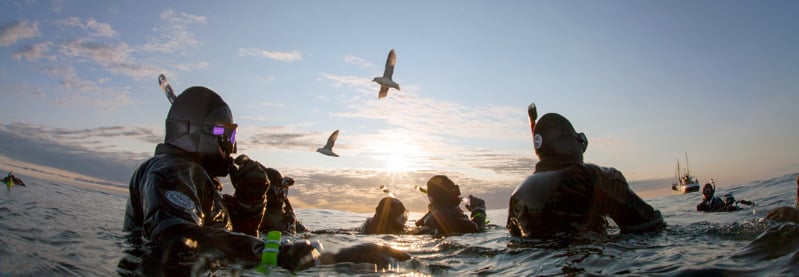
Dive In
Suunto is proud to present this four part series with pioneering diver and explorer Jill Heinerth taking an in depth looks at the basics of diving physics and physiology to help you better understand your dive computer and plan safer dives.
Suunto Ambassador, pioneering cave diver, explorer and author Jill Heinerth talks about diving physiology in episode one of this four part series.
Can’t wait to watch the episodes? Click the links to dive right in!
Watch Episiode 1 now
Watch Epsiode 2 now
Watch Episode 3 now
Watch Episode 4 now
In this episode, Jill Heinerth discusses the basics of dive physics and physiology and how to better use your dive computers as an effective tool when planning, and executing dives.
Talking biological tissue and dive computers, Jill explains how the body reacts to the inert gas you breathe during a dive. When the body is subject to pressure from depth during a dive, it ‘on gasses’ as the inert gas dissolves into your tissues.
Our body tissues include the blood, the brain, ligaments, skin, bone, fat and all your organs and each tissue is delievered different amounts of blood, therefore absorbing different amounts of gas.
The rate in which tissues uptake and release the gas occurs differently for each group of tissues. The groups are sorted into different compartments alongside tissues that have similar gas saturation properties and behave in the same manner.
A dive computer allows the diver to view information that assists them on a dive, and the diver has the opportunity to decide to follow the device.
A dive computer will not, for the most, consider the individual differences of each diver using it. The "type" of diver that is considered is an average person, and there is an added safety margin to take into account to accommodate variations.
Your Suunto dive computer is based on mathematical models. This model, or algorithm, calculates the on gassing and off gassing of your compartments. The algorithm implemented at the core of a computer is a simulation of what happens to gases in a diver's body in an environment where pressure changes.
The research and development team at Suunto test, test and test again to ensure they meet the strictest performance targets. The dive team at Suunto are constantly improving and fine tuning the devices by diving with them over and over again, because we know you will too.
Check out episode one now and explore these topics further.
Episode 2
In episode two of Dive In, Jill Heinerth discusses how your dive commuter calculates ascents or decompression stops as we delve deeper into the basics of diving physics and physiology for both recreational divers, and those who dive beyond.
Having discussed how the human body stores and releases inert gas in the last episode, this week Jill examines how your dive computer calculates the maths that work out how the body gets rid of gas during off gassing, and how an ascent is just the beginning of the off-gassing process. Off gassing ends when the body has reached and found equilibrium with the surface.
When the body cannot take on any more gas into solution, it is termed- critical super saturation. This critical moment of reaching maximum pressure is known as the M value.
Different compartments mean lots of M values to consider in order to calculate how the body off gases when ascending during a dive.
Recreational divers will only consider the fast tissues. The time and depth parameters that recreational divers adhere to, keeps them away from nearing critical super saturation point. This is so they may directly ascend to the surface without a decompression stop.
Tech divers load both their fast and slower tissues, and this adds another layer of considerations. Sunnto has a team of dedicated researchers, engineers and testers who are constantly improving algorithms and have much real world dive data to use for their improvements.
Jill dives with Suunto, and says, “I have been diving with Suunto dive computers for over 20 years. Part of this is because I have seen the rigorous testing regiments, I’ve seen the manufacturing standards, as well as their active algorithm research and development. I’ve been to the factory, seen their testing and I know I can rely on their commitment to excellence.”
Find out why decompression models use up to 16 different theoretical tissue compartments and many more hot topics as Jill explains how your computer works in the second episode of Dive In.
Tune in next time for episode 3 to watch Jill get deep with personal factors and gradient factors.
Episode 3
Do you know what your Personal Factors are?
In a world where we are able to choose a product based on what is best suited for our individual needs, why would such a crucial piece of dive equipment, your dive computer, be any different?
Personal factors should not be over looked, yet many divers never read in to the dive computer manual deep enough to understand that their device can be tailored to suit an individual’s need. External influences can be taken into account and the dive computer conservatism setting can factor in risks for each dive. This is a very important part of safer dive planning.
During this episode of Dive In, we look at what the personal factors on a Suunto computer are, and how they need to be applied.
Jill also talks gradient factors, algorithms and dive teams. Few users, or even instructors actually understand how gradient factors work, or what they are. She shines a light on how different decompression models behave, and how dive buddies can work together even if they are diving following different decompression models.
Jill delves into what each number of the gradient factor represent, which one is more important and how to use them in your dive planning.
Jill also looks into the deep stop mystery. As divers we still have a lot of research to do into them, and over the years there has been much conflicting anecdotal advice. There is much misinformation buzzing around social media and dive forums leading to a vast amount of confusion.
Watch now as Jill Heinerth sets us straight on the key issues in this episode of Dive in.
Make sure you tune in next week for the fourth, the final and bonus episode where Jill shares her story of getting hit.
Episode 4
In the final instalment of Dive In, Suunto Ambassador Jill Heinerth discusses her experience of getting ’hit’ with Decompression Sickness (DCS) twenty years ago, what she has since learnt, and how she has adapted her dives to suit her.
Jill was thousands of dives into her career and thought it would never happen to her. DCS, or the bends, is a sports injury and there is a spectrum of how the bubbles can affect your body from a skin rash to paralysis.
In many cases the resulting tissue damage will remain, perhaps increasing the risk of another hit.
Making a few minor changes to her dive since her experience, watch to see how Jill optimises her off gassing phase on a dive and what surprises she has found by doing that little bit extra.
No mathematical algorithm can guarantee your absolute safety, and it is unfair to blame a device if you do get bent. Use your computer to the full and be armed with the knowledge of exactly how it works. Dive computers open up a whole wealth of new underwater adventures, so for one last time, let’s Dive In with Jill.
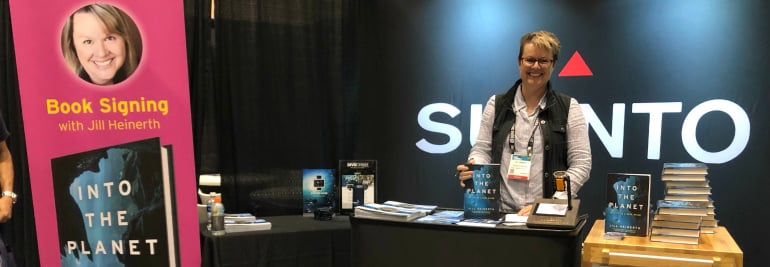
Jill Heinerth joins diving hall of fame
Suunto is proud to announce its ambassador Jill Heinerth has been inducted into the International Scuba Diving Hall of Fame, 2020. An honor she more than deserves thanks to her incredible contribution to diving and exploration.
As a pioneering cave diver and explorer, documentary maker and author Jill Heinerth has educated and inspired people around the world about our incredible underwater world and the human impact on it. The International Scuba Diver Hall of Fame is an annual event that recognizes people who have significantly and positively impacted the industry through education, exploration, adventure and more. Founded by the Cayman Islands Ministry of Tourism in 2000, the award ceremony will take place in September 2020 in the Caymans.
During an announcement ceremony at DEMA Show, 2019, Jill spoke of what the award means to her.
“Such an amazing honor for a young woman who started her professional diving career in the Cayman Islands a long time ago. This is really fantastic at a time in my life that is very meaningful where I am just releasing my new book Into the Planet and a new documentary, Under Thin Ice. Thank you for this incredible honor! I look forward to visiting the Cayman Islands to accept it.”
There were three more nominees announced for the 2020 induction and they are Handicapped Scuba Association Founder Jim Gatacre, DEMA Executive Director Tom Ingram, and Undersea Hunter Group Founder Avi Klapfer.
Jill was at the Suunto booth this year signing copies of her incredible memoir, Into the Planet.
Released in August, Into the Planet is a thrilling insight into places inside the Earth you may not have imagined exist, but where Jill has dived. She bravely illustrates intense political issues and presents hard evidence about the impacted ice caps and beyond.
Her autobiography explores life-or-death decision-making in critical underwater situations, the pain and difficulty involved in recovering the dead bodies of her tragically lost friends from caves that no one else in the world has the ability, training, and mindset to access due to such extreme conditions.
Speaking at a Suunto function during DEMA Show, 2019, Jill talked about her memories, which are fascinating for both divers and non divers thanks to their important messages.
